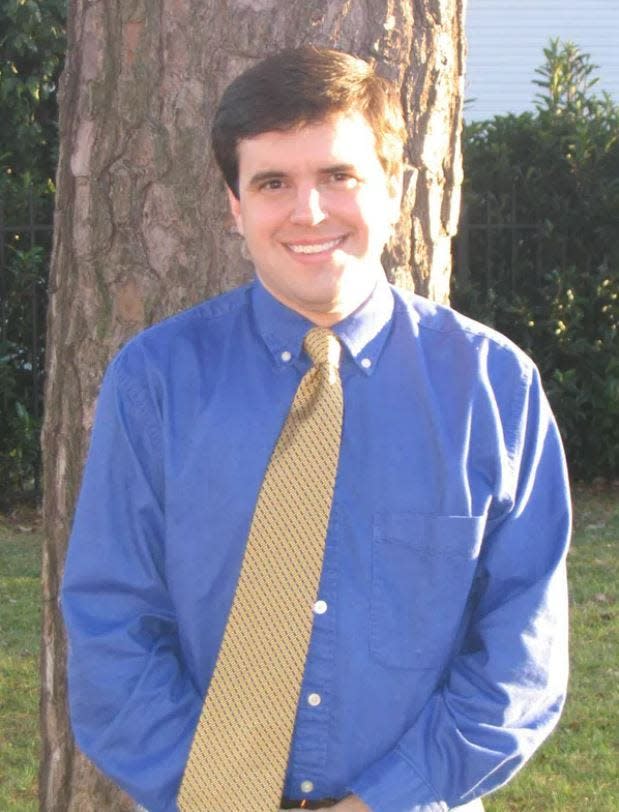Texan Wiley Hardeman Post famous for achievements in flight, crash with Will Rogers

- Oops!Something went wrong.Please try again later.
- Oops!Something went wrong.Please try again later.
For the adventurers and dreamers of the world, there are no limits. Wiley Hardeman Post was born on his parents’ cotton farm near Canton in November 1898. He was born on a farm with no electricity in a time when airplanes were still just a dream, but within a few years, he would become one of the most famous pilots in the world.
Like many farm families of the time, the Post Family often struggled and moved often. When he was three, the family left Van Zandt County and moved to a farm near Abilene. In 1907, the family moved to Oklahoma.
Post’s education was limited, and Post was never a very good student. He never attended high school, which was not unusual for the time period. He saw his first airplane when he and his family attended a county fair in Lawton, Oklahoma, in 1913. He immediately fell in love with aviation. Post soon enrolled at the Sweeney Automobile and Aviation School in Kansas City, Missouri, where he learned to fly. After a few months of study, he returned to Oklahoma, but he was unable to make a living as a pilot, and his dream of aviation had to wait. He worked various jobs in construction and in the oil fields for the next few years.
In 1918, during World War I, he enlisted in the Army Air Corps and trained as a pilot and radio technician. However, the war ended before he saw active service and was discharged.
Post returned to the oilfields, and in 1924, joined an air show called Burrell Tibbs and His Topnotch Texas Flyers. He thrilled audiences as a parachutist, at a time when jumping from an airplane was still very new, and as a pilot. The pay, however, was unsteady, and he had to return to working the oil fields. In 1926, an oil rig accident in Oklahoma injured his left eye, and he later lost all vision in that eye after an infection set in. He won a worker’s compensation award of $1,700 (or about $25,800 in 2021 dollars) and bought his first airplane. He made a steady living flying a passenger at a time from one location to the next. It was during this time that he met Will Rogers, a popular comedian, movie star, and performer. In 1930, Post became the personal pilot to two prominent Oklahoma oilmen and bought his next plane, a Lockheed Vega he named Winnie Mae after his daughter.
He gained national fame when he won the National Air Race Derby in this plane in August 1930. He flew from Los Angeles to Chicago in a record nine hours and eight minutes. The next year, he took on his next big challenge: to become the first to fly around the world in a fixed-wing aircraft. Joined by his navigator, Harold Gatty of Australia, he left Long Island, New York, in the Winnie Mae in July 1931, and with stops along the way, they flew more than 15,400 miles in eight days, 15 hours. Afterward, they were given a ticker-tape parade in New York City and published a book on the flight called Around the World in Eight Days. In 1932, he was honored by Congress with the award of the Distinguished Flying Cross for his exploits.
He took it a step further in July 1933 to embark on a solo flight around the world. He modified his plane with experimental autopilot and radio directional finders and flew east from New York City. His trip was even faster this time. With stops, he completed his trip in seven days, 18 hours.
Post was inspired to fly higher and further than ever. Working with engineer Russell S. Colley, he developed one of the first pressure suits for high-altitude flights. Using what he jokingly called his “Man From Mars” suit, he reached an altitude of 40,000 feet in this pressure suit in September 1934. In another flight shortly afterward, he reached an altitude of 50,000 feet, well into the stratosphere. He noticed on these high-altitude flights eastward that his ground speed was often faster than his air speed. In doing so, he was the first pilot to confirm the proposed existence of what was later called the jet stream, which is still an important part of timing air flights and predicting the weather.
By 1935, he was trying to develop passenger and air mail routes from the Pacific Coast to Russia. At the time, he was building his own aircraft from parts scavenged from other aircraft. His friend Will Rogers asked to fly with him when they left in August 1935. Rogers wrote about the trip for his newspaper column, and the two celebrities created a stir with each stop in Washington and Alaska. On August 15, they left Fairbanks for Point Barrow on the Arctic Ocean. Along the way, they became lost in the vast and unmarked territory. They landed near a lagoon to ask for directions. The plane crashed shortly after its next takeoff, and both men were killed. The cause of the crash was never fully established.
After his death, several airports were named after him. Wiley Post Airport is a municipal airport in Oklahoma City. Barrow, Alaska (now Utqiagvik), and Renton, Washington, both have airports named in honor of both Post and Will Rogers. In 1936, the Smithsonian bought his airplane Winnie Mae, which is now on display at the National Air and Space Museum in Washington, DC. His insights into the jet stream and pressure suits are still an important part of aviation today.
This article originally appeared on Lubbock Avalanche-Journal: Texan Wiley Post famous for achievements flight crash with Will Rogers
